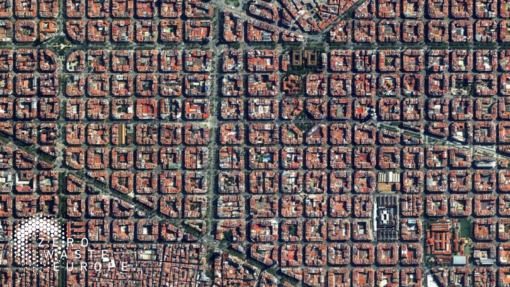
New carbon calculator for cities: where zero waste meets climate action
Cities are faced with one of the most difficult challenges in our war on waste—a tangled web of varying systems, regulations, and frameworks. Yet, amid this chaos, one crucial aspect remains overlooked: the carbon emissions perspective of waste prevention.
Since Capannori boldly declared its zero waste goal in 2007, Zero Waste Europe has been at the forefront, collaborating with cities to pioneer a new approach. Back then, we recognised the urgent need to intertwine climate policies with zero waste strategies, laying the groundwork for a more sustainable future.
We know the potential that zero waste has to advance the climate agenda. In 2015, during the Paris COP, we commissioned a study looking at the climate impacts of different waste options and the graph below shows the huge potential that prevention and reuse policies have, followed by recycling policies.

Source: The potential contribution of waste management to a low carbon economy, Eunomia 2015
With this in mind, shifting investment from waste management to waste prevention becomes a no-brainer. If we are serious about tackling the climate crisis, we need to prioritise prevention and reuse. Unfortunately, the reality on the ground is much more stubborn. Climate action has barely moved the needle when it comes to the resource use agenda. Sluggish collection and recycling rates while backtracking on prevention and reuse in Europe serve as a testimony to this fact.
This is why in 2021 Zero Waste Europe teamed up with the Catalan consultancy Inèdit to develop a carbon calculator tool that is capable of calculating not only the emissions savings of better segregating and recycling of waste, but actually can factor in the impact of prevention and reuse activities. With this tool, it’s possible to compare the emissions generated by the waste management of any European municipality with the emissions saved if it would implement a zero waste strategy – which can be designed using the zero waste certification process, used already by many municipalities.
After two years of development and fine-tuning, we have tested the tool with the many cities, including Barcelona, which is planning to start walking the path to zero waste.
The results of these pilots will be presented on April 18 in the Waste In Progress congress in Girona and I can already tell you that the impact of the emissions savings is important in the short-term and when looking at the long term it is just jaw-dropping due to the nature of cumulative reductions.
And you may think, “Fine, we already know the gospel that reducing waste and better managing it reduces emissions and makes environmental sense…the question is, who is going to pay for the transition to a low-emissions and low-waste economy?”
And you would be right. The challenge of any system change is finding the drivers for it. The good news is that, thanks to our carbon calculator, it is possible to give a good estimation of the potential emissions savings associated with concrete actions, meaning: we can put a “carbon price tag” on zero waste strategies and finally get the climate agenda to finance the resource transition.
We are currently working on developing an impact-based funding mechanism to mobilise climate funding to finance prevention and reuse policies in cities. If want to know more join us in our presentation in the Waste in Progress in Girona on April 18 and stay tuned to our channels!